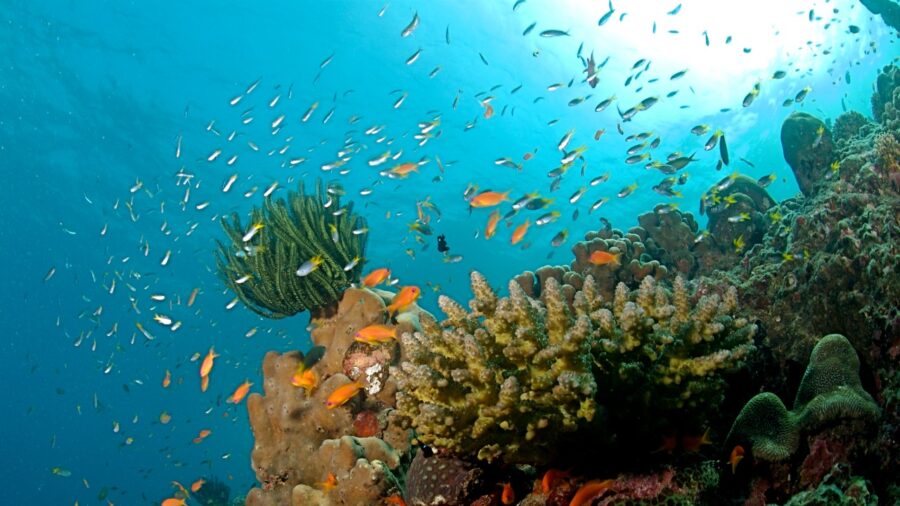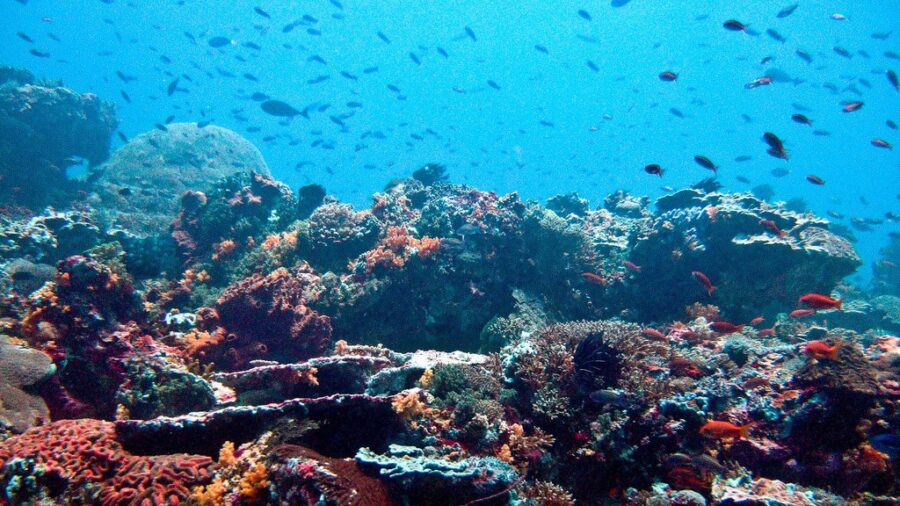Coral Reef Discovered In Galapagos Islands In Pristine Condition
A coral reef near the Galapagos Islands has been untouched by humans for thousands of years.

We live in a world where humans have made a point of destroying most of its coral reefs, thanks to climate change and ocean pollution. Ocean researchers have discovered one that we’ve managed to miss so far, and this reef, which CNN reports is located far below the surface near the Galapagos Islands, is about 2 miles long and is in surprisingly pristine condition — untouched by humans.
The coral reef, which the Charles Darwin Foundation says is at least several thousand years old, has more than 50 percent living coral. The reef was also teeming with lobsters, fish, sharks, rays, and octopuses.
This reef is only the second Galapagos reef to have survived the disastrous El Nino weather that plagued the islands in 1982 and 1983. Previously, only the Wellington Reef, located near Darwin Island, was known to survive.
The reason this coral reef has gone undiscovered for so long likely has to do with its depth. While the Wellington Reef is only between 5 and 25 meters underwater, this new reef is 400 meters beneath the ocean‘s surface.
Scientists were only able to discover this reef because they used an HOV Alvin submarine — a human-occupied vehicle that lets a team of two scientists descend by up to 6,500 meters below the surface. The scientists discovered this reef while mapping a previously-unknown submarine mountain. The coral reef was found at the mountain’s summit.
This discovery comes as coral reefs worldwide face an existential threat thanks to the changing climate and pollution. The most famous reef system, the 2,300-kilometer-long Great Barrier Reef off northeast the coast of Australia, is listed as being “in danger” by UNESCO after the reef suffered from multiple mass bleaching events — weeks-long periods of reef degradation caused by abnormally-high temperatures.

We’ve already lost about 50 percent of the world’s coral reefs, and some researchers even believe that 90 percent of the ocean’s reefs will disappear by 2050. The loss of coral reefs would cause a sharp decline in coastal fish populations, which would, in turn, hurt the world’s fishing industry and those who rely on it.
The discovery of this new reef does raise scientists’ hopes that the world’s coral reefs aren’t completely doomed. While most of the world’s reefs are threatened, the newly-discovered reef proves that some reefs can survive the record-high sea temperatures the world has been facing. Scientists also say that the existence of the reef shows the importance of conservation efforts since the reef is part of the 200,000-square-kilometer Galapagos marine reserve.
This coral reef, and the Galapagos marine preserve, are part of an even greater South American preservation effort. In 2004, Ecuador, the nation that contains the Galapagos Islands, joined with Panama, Columbia, and Costa Rica to create the Eastern Tropical Pacific Marine Corridor — a protected area in which no fishing is allowed. The 500,000 square kilometer corridor is designed to provide safe migratory routes for many species that have been threatened by human encroachment, including humpback whales, whales, sea turtles, and hammerhead sharks.
There are likely even more undiscovered underwater Edens within the corridor, which has proven itself to be very effective at helping marine life thrive in an increasingly hostile world.












